푸른악마들의 고향 몬테 카지노
SOA[Snowstrom of Afghanistan] | 2007-01-30 14:51:29
조회 5457 | 추천 0 | 다운로드 14
1944 - Battle of Cassino, Italy.
--------------------------------------------------------------------------------
The strategic position of Monte Cassino has made it the repeated scene of battles and sieges from antiquity.
In World War II, the Battle of Monte Cassino (also known as the Battle for Rome) was a costly series of battles fought by the Allies with the intention of breaking through the Gustav Line, seizing Rome and linking up with Allied forces contained within the Anzio pocket.
The first battle started on January 4, 1944 and the monastery atop the hill was destroyed by Allied bombing on February 15. Allied aircraft heavily bombed the ruins of the monastery and staged an assault on March 15.
During three failed attempts to take the heavily-guarded monastery of Monte Cassino (January 17–25, February 15–February 18, March 15–March 25), the forces of the USA, the UK, India, Canada, Australia, South Africa and New Zealand lost approximately 54,000 men yet did not manage to seize the city or the castle overlooking the Rapido River valley.
The so-called Fourth Battle of Monte Cassino was fought by the 2nd Polish Corps under General Wladyslaw Anders (May 11–May 19). The Indian divisions stationed there helped in the capturing of the main Gunnery for which a member of the Indian armed forces was awarded with the Victoria Cross for his daring raid into the gunnery and killing all there.
The first assault (May 11–May 12) brought heavy losses but also allowed the British Eighth Army under General Sir Oliver Leese to break through German lines in the Liri river valley below the monastery.
The second assault (May 17–May 19), carried out at immense cost by the Polish troops and the key out-flanking movement in the mountains by skilled Moroccan soldiers of the 4ème Division Marocaine de Montagne (French Expeditionary Corps CEF), pushed the German 1st Parachute Division out of its positions on the hills surrounding the monastery and almost surrounded them. In the early morning of May 18 a reconnaissance group of Polish 12th Podolian Uhlans Regiment occupied the ruins of the monastery after it was evacuated by the Germans.
The capture of Monte Cassino allowed the British and American divisions to begin the advance on Rome, which fell on June 4, 1944 just two days before the Normandy invasion.
In the course of the battles the historic monastery of Monte Cassino, where St. Benedict first established the rule that ordered monasticism in the west, was entirely destroyed by the US Air Force. Fortunately its irreplaceable library had been removed for safekeeping to Rome at the start of the Battle by the Germans. The site has since been rebuilt, but the historic buildings are gone.
1. The city of Cassino, after the bombing of the March 15th 1944.
2. Aerial view on the Monastery after the destruction. A band of German paratroops hidden in a cave under the Monastery survived this hell.
3. Germans fighting in the ruins of Cassino.
4. Cavendish Road - After the operation "Revenge" a polish column with mules is hitten by the Germans.
5. German troops occupied the Continental Hotel in Cassino. Captain Rennecke (the one with the forage cap) gives orders for the next attack.
원문설명들입니다. 조만간 해석하겠습니다.
--------------------------------------------------------------------------------
The strategic position of Monte Cassino has made it the repeated scene of battles and sieges from antiquity.
In World War II, the Battle of Monte Cassino (also known as the Battle for Rome) was a costly series of battles fought by the Allies with the intention of breaking through the Gustav Line, seizing Rome and linking up with Allied forces contained within the Anzio pocket.
The first battle started on January 4, 1944 and the monastery atop the hill was destroyed by Allied bombing on February 15. Allied aircraft heavily bombed the ruins of the monastery and staged an assault on March 15.
During three failed attempts to take the heavily-guarded monastery of Monte Cassino (January 17–25, February 15–February 18, March 15–March 25), the forces of the USA, the UK, India, Canada, Australia, South Africa and New Zealand lost approximately 54,000 men yet did not manage to seize the city or the castle overlooking the Rapido River valley.
The so-called Fourth Battle of Monte Cassino was fought by the 2nd Polish Corps under General Wladyslaw Anders (May 11–May 19). The Indian divisions stationed there helped in the capturing of the main Gunnery for which a member of the Indian armed forces was awarded with the Victoria Cross for his daring raid into the gunnery and killing all there.
The first assault (May 11–May 12) brought heavy losses but also allowed the British Eighth Army under General Sir Oliver Leese to break through German lines in the Liri river valley below the monastery.
The second assault (May 17–May 19), carried out at immense cost by the Polish troops and the key out-flanking movement in the mountains by skilled Moroccan soldiers of the 4ème Division Marocaine de Montagne (French Expeditionary Corps CEF), pushed the German 1st Parachute Division out of its positions on the hills surrounding the monastery and almost surrounded them. In the early morning of May 18 a reconnaissance group of Polish 12th Podolian Uhlans Regiment occupied the ruins of the monastery after it was evacuated by the Germans.
The capture of Monte Cassino allowed the British and American divisions to begin the advance on Rome, which fell on June 4, 1944 just two days before the Normandy invasion.
In the course of the battles the historic monastery of Monte Cassino, where St. Benedict first established the rule that ordered monasticism in the west, was entirely destroyed by the US Air Force. Fortunately its irreplaceable library had been removed for safekeeping to Rome at the start of the Battle by the Germans. The site has since been rebuilt, but the historic buildings are gone.
1. The city of Cassino, after the bombing of the March 15th 1944.
2. Aerial view on the Monastery after the destruction. A band of German paratroops hidden in a cave under the Monastery survived this hell.
3. Germans fighting in the ruins of Cassino.
4. Cavendish Road - After the operation "Revenge" a polish column with mules is hitten by the Germans.
5. German troops occupied the Continental Hotel in Cassino. Captain Rennecke (the one with the forage cap) gives orders for the next attack.
원문설명들입니다. 조만간 해석하겠습니다.


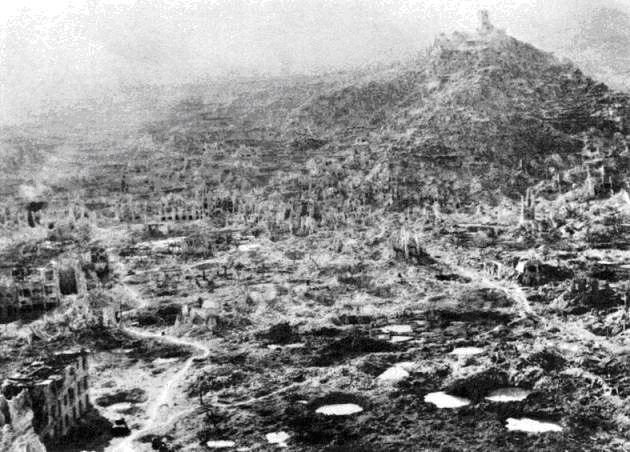
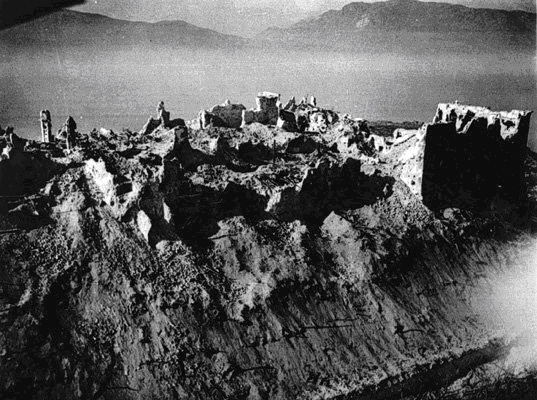
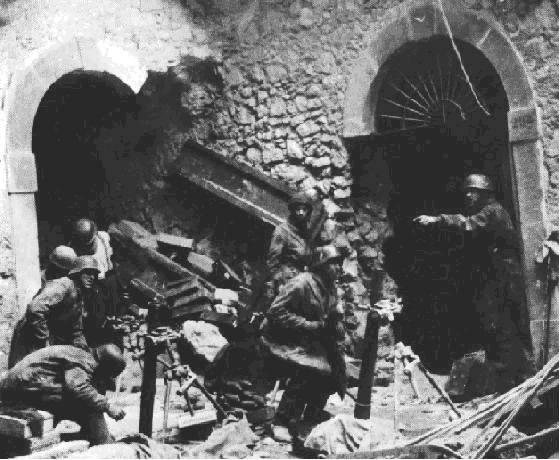
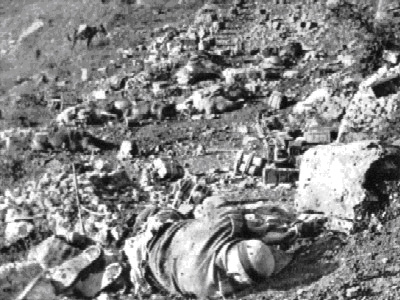
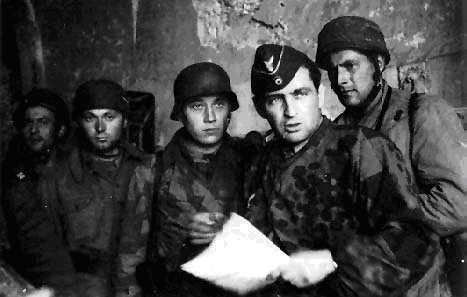



 1
1


댓글 [10]
드루이드 | 2007-01-31 | 추천 0
bedford1 | 2007-01-30 | 추천 0
드루이드 | 2007-01-30 | 추천 0
bedford1 | 2007-01-30 | 추천 0
치안유지 | 2007-01-30 | 추천 0
세르쿠르카 | 2007-01-30 | 추천 0
리피젼링클 | 2007-01-30 | 추천 0
후레자식 아서스 | 2007-01-30 | 추천 0
엄준수 | 2007-01-30 | 추천 0
SOA[Snowstrom of Afghanistan] | 2007-01-30 | 추천 0